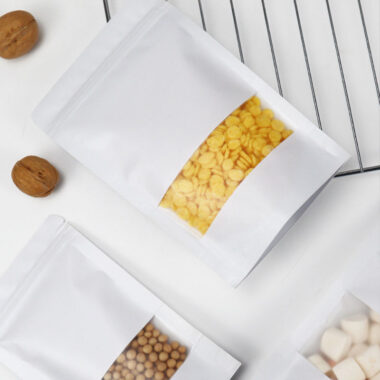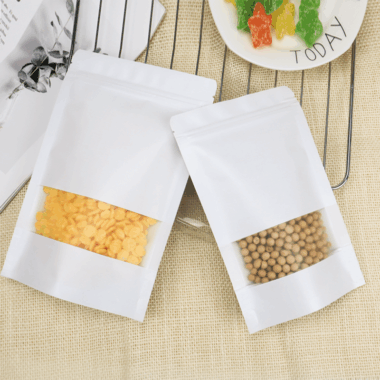Introduction
Printing is one of the most important stages in custom paper pouch production because it defines both the visual identity and functional performance of the packaging. For industries such as food, coffee, tea, snacks, and cosmetics, accurate printing ensures brand recognition and consumer trust. This guide outlines the detailed steps in the printing process, helping buyers understand what to expect when working with a professional paper pouch manufacturer.
📌 Step 1: Artwork & Dieline Preparation
The process begins with preparing the artwork and dieline. A dieline is a technical template that shows the exact shape, folds, and sealing areas of the pouch. Designers must place brand logos, product information, barcodes, and graphics while ensuring that no important text falls into sealing zones. Providing high-resolution images and vector files is crucial to achieve sharp printing. Manufacturers often assist clients with dieline templates to simplify this stage.
🖊️ Step 2: Pre-Press Checks & Proofing
Before going to press, all artwork files undergo pre-press checks. This includes verifying CMYK color settings, adding bleeds, confirming safety margins, and checking for overprint issues. A soft proof (digital PDF) or hard copy proof is then provided for approval. This step is essential to ensure accuracy and avoid costly errors during production. Once approved, printing plates or cylinders are created for large-scale runs.
🎨 Step 3: Choosing the Printing Method
There are three main printing methods used for paper pouches:
-
Digital Printing: Fast and flexible, ideal for small runs or multiple SKUs.
-
Flexographic Printing: Cost-efficient for medium to large orders, with high-quality results.
-
Gravure Printing: Best for very large volumes, offering premium consistency and vibrant colors.
The choice depends on order size, budget, and design complexity. A professional paper pouch supplier will recommend the most suitable method.
🌈 Step 4: Color Management & Approval
Color is a critical factor in branding. Manufacturers often provide Pantone color matching and drawdowns printed on the actual material to ensure accuracy. It is important to confirm tolerance levels so the final pouches maintain consistent brand colors across batches. For sensitive designs, a press proof can be arranged before full production begins.
🛡️ Step 5: Printing & Lamination
Once artwork and colors are approved, the actual printing takes place. Depending on the design, printing may be done directly on paper or on film layers that are later laminated to paper. Lamination enhances durability, provides moisture and oxygen barriers, and improves shelf appearance. Options include matte, glossy, or soft-touch finishes, allowing brands to create the desired look and feel.
⚙️ Step 6: Pouch Forming & Quality Checks
After lamination, the printed rolls are slit and fed into pouch-making machines. These machines cut, fold, and seal the material into the required format, such as stand-up pouches, gusseted bags, or flat pouches. During this stage, zippers, tear notches, or valves can be added. Quality checks are conducted to ensure proper sealing strength, print registration, and barrier performance. Defective pouches are removed before packing.
📦 Step 7: Packing & Delivery
The final stage involves packing the finished pouches into cartons for safe delivery. Labels, batch codes, and barcodes are applied as required. A reliable paper pouch factory coordinates logistics, ensuring on-time delivery whether the order is for local wholesale supply or international shipment. Buyers can choose bulk packaging or retail-ready packaging depending on market needs.
Conclusion
The custom paper pouch printing process is a carefully managed sequence of steps, from initial artwork preparation to final delivery. By understanding each stage—design, proofing, printing, lamination, forming, and inspection—buyers gain confidence in the product quality and supplier reliability. Working with an experienced manufacturer not only ensures consistent results but also reduces risk, helping brands achieve packaging that is durable, functional, and visually appealing.

















